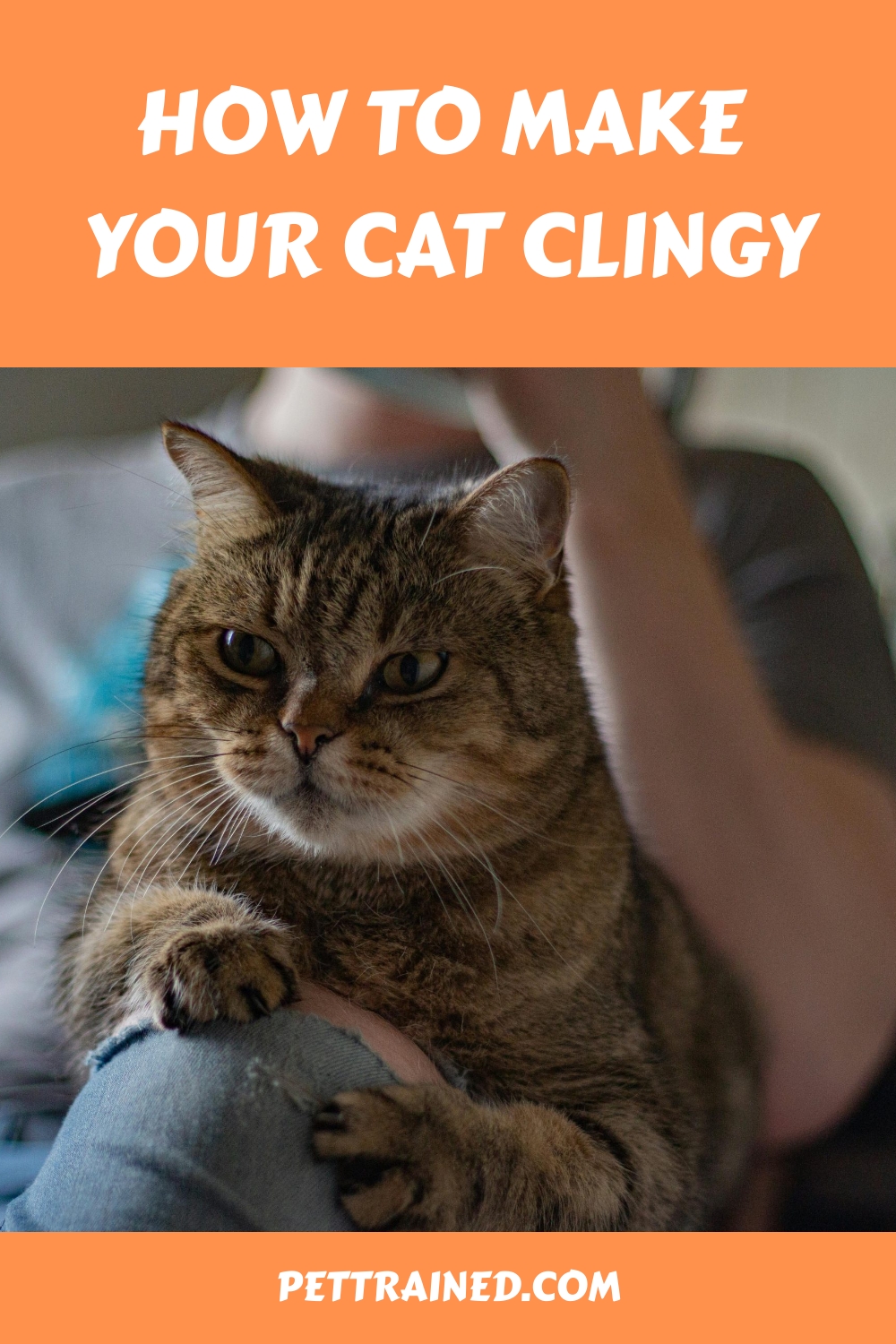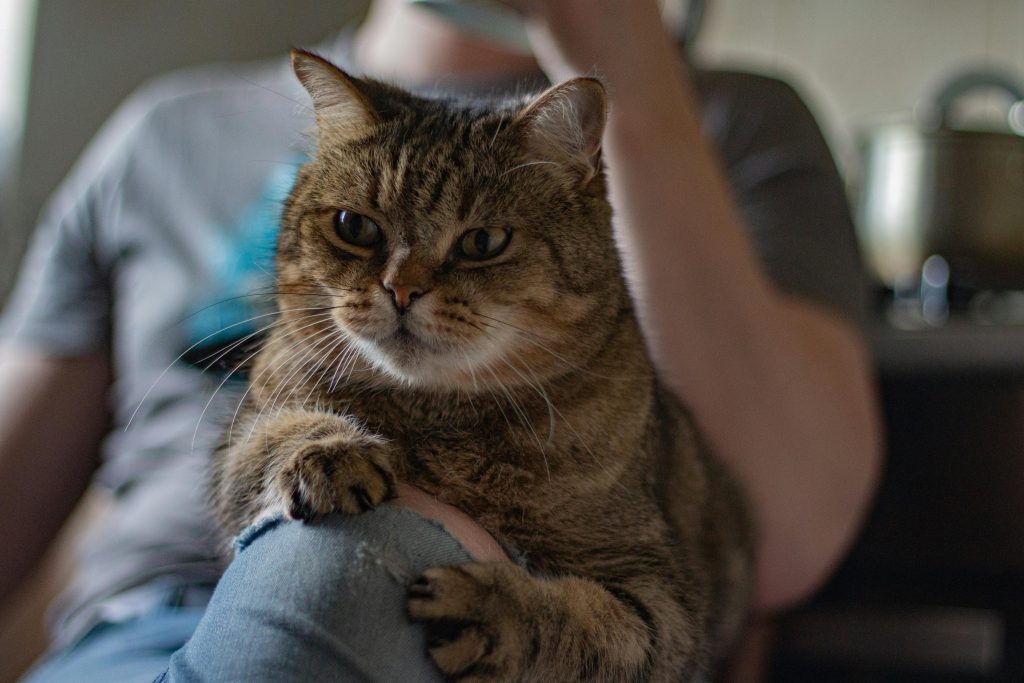
You can make your cat clingy by establishing a consistent daily routine that includes regular feeding times, quality playtime, and physical affection. Create a quiet, comfortable space for feeding and minimize distractions to foster dependence. One-on-one time and shared activities, such as food puzzle games and bird-watching, strengthen the bond and promote affection. Use proper petting techniques, focusing on high-sensitivity areas like the head and cheeks, to create a calming and enjoyable experience for your cat.
By adopting these habits, you’ll be well on your way to creating a clingy cat that craves your attention and affection – but there’s more to explore.
Table of Contents
Key Takeaways

- Establish a daily feeding routine to foster dependence and create a strong bond with your cat through consistent nourishment and care.
- Engage in regular play sessions and interactive activities, such as food puzzle games and bird watching, to stimulate emotional connections.
- Practice proper petting techniques, focusing on gentle grooming strokes and targeting high sensitivity areas like the head and cheeks.
- Reward affectionate behaviors with treats and praise, using positive reinforcement techniques to associate desired actions with rewards.
Establish a Daily Feeding Routine
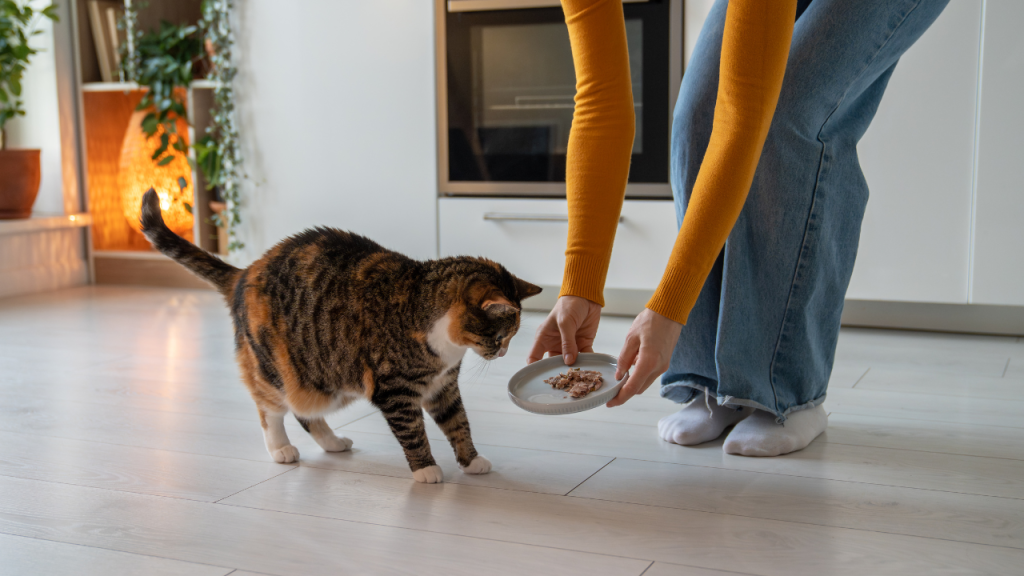
By establishing a consistent daily feeding routine, you’ll create a sense of dependence in your cat, making it more likely to cling to you for sustenance and attention.
Cats are creatures of habit, and they appreciate the predictability that comes with a regular feeding schedule. Set specific times for meals and snacks, and try to maintain this routine even on weekends and holidays.
This post contains affiliate links. However all the information provided on this site are my own honest opinions. See more in Disclaimer.
To optimize the effects of meal consistency, control the feeding environment. Designate a specific area for feeding, such as a quiet room or a cozy spot in the kitchen. This helps your cat associate the location with sustenance and creates a positive emotional connection.
When feeding, minimize distractions and guarantee your cat feels safe and comfortable. This will help reinforce the bond between you and your cat, as it learns to rely on you for nourishment and care.
Pet Your Cat Correctly

As you work to make your cat clingy, it’s crucial to focus on proper petting techniques that promote affection and trust.
You’ll need to master gentle touch techniques that your cat finds soothing and enjoyable, rather than rough or irritating.
Gentle Touch Techniques

Your touch is a crucial factor in establishing a strong bond with your cat, and mastering gentle petting techniques is essential to encourage clingy behavior.
When you pet your cat, you’re not just showing affection; you’re also stimulating their senses and creating a sense of calm.
To pet your cat correctly, start by using gentle grooming strokes, similar to how a mother cat grooms her kittens. This type of touch will help your cat relax and feel comfortable in your presence.
As you pet your cat, pay attention to the sounds they make. If they’re purring or making soothing sounds, it’s a good sign that they’re enjoying the sensation.
You can also try speaking in a soft, gentle voice to create a calming atmosphere.
Remember to be patient and adjust your touch according to your cat’s mood and preferences. By mastering gentle touch techniques, you’ll be able to create a sense of trust and security with your cat, laying the foundation for a clingy and affectionate relationship.
With consistent practice, your cat will come to associate your touch with comfort and companionship, leading to a deeper and more meaningful bond.
Proper Petting Areas

Mastering gentle touch techniques is just the first step; now you need to learn which areas of your cat’s body respond best to petting, as some spots are more sensitive and enjoyable for them than others.
Proper grooming is key to building a strong bond with your cat, and knowing their favorite spots will make them adore you even more.
| Petting Area | Sensitivity Level | Enjoyment Level |
|---|---|---|
| Head and Cheeks | High | High |
| Behind the Ears | Medium | High |
| Base of the Tail | Low | Medium |
When petting your cat, focus on the areas with high sensitivity and enjoyment levels. Gently stroke their head and cheeks, and softly rub behind their ears.
Avoid the base of the tail, as it can be a sensitive spot for some cats. By targeting your cat’s favorite spots, you’ll create a positive association with touch and strengthen your bond.
Proper grooming is an essential aspect of making your cat clingy, as it allows you to show affection and build trust. By mastering proper petting areas, you’ll be one step closer to having a cat that can’t get enough of you.
Create a Comfortable Sleep Space
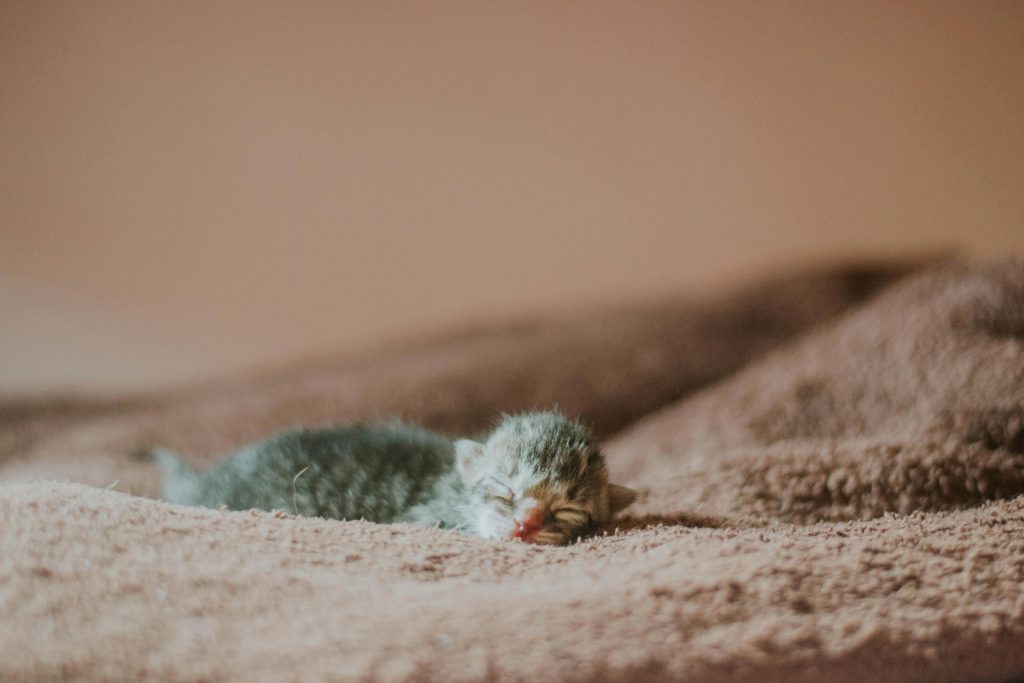
By providing a cozy and inviting sleeping area, you’ll encourage your cat to snuggle up and claim this space as its own, fostering a sense of security and attachment.
To create the perfect sleeping haven, start by supplying a comfortable bed or mattress. Choose a spot with cozy bedding that will provide adequate support and warmth, such as a plush blanket or a cat bed with a soft cushion.
You should also prioritize a quiet environment, as cats can be easily disturbed by loud noises or constant activity. This quiet space will allow your cat to rest and recharge, feeling safe and protected.
Place the bed in a quiet corner or against a wall, providing a sense of security and shelter. You can also add some familiar scents, such as a blanket that smells like you, to create a cozy and reassuring atmosphere.
As your cat spends more time in its sleeping space, it’ll begin to associate this spot with feelings of comfort and security, ultimately leading to a stronger bond between you and your feline companion.
Engage in Playful Interactions

Engaging in regular play sessions with cats fosters a deep emotional connection, as the release of oxytocin and other feel-good hormones strengthens the bond between cat and owner.
When you take the time to engage in playful interactions with your cat, you’re doing more than just entertaining them – you’re building a strong foundation for a lifelong relationship.
To make playtime even more effective, use interactive toys that challenge your cat’s natural hunting instincts. These toys encourage physical activity and mental stimulation, making playtime a rich and rewarding experience for both of you.
Incorporate a variety of bonding activities into your daily routine, such as chasing a laser pointer or tossing a ball of yarn. This playtime doesn’t have to be lengthy; even short sessions can have a profound impact on your cat’s attachment to you.
By prioritizing play, you’re sending a clear message to your cat that you value and enjoy their company. Over time, your cat will learn to crave this interaction, becoming increasingly affectionate and clingy as a result.
Regular play sessions are essential for creating a deep and lasting bond with your feline companion.
Reward Affectionate Behavior
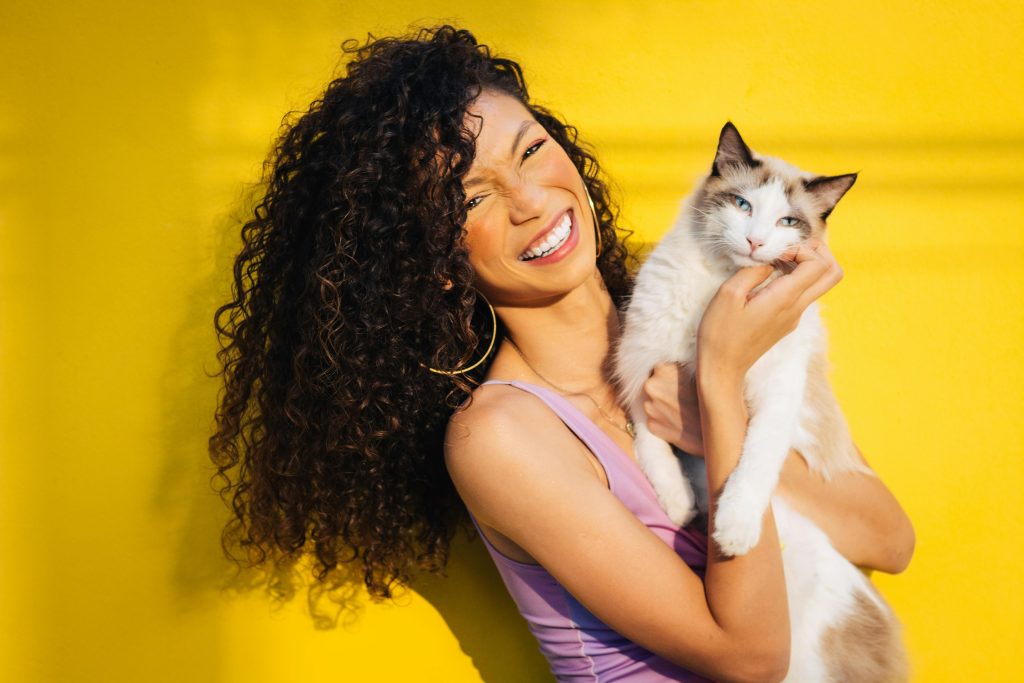
To encourage your cat’s clingy behavior, you’ll want to focus on rewarding affectionate actions.
By doing so, you’ll reinforce positive interactions and create a stronger bond between you and your pet.
Trending in Dogs:
You can start by using treats and praise to acknowledge your cat’s affectionate behavior, such as when they nuzzle, rub, or knead against you. Read 25 Cat Facts For Cat Owners.
Positive Reinforcement Works
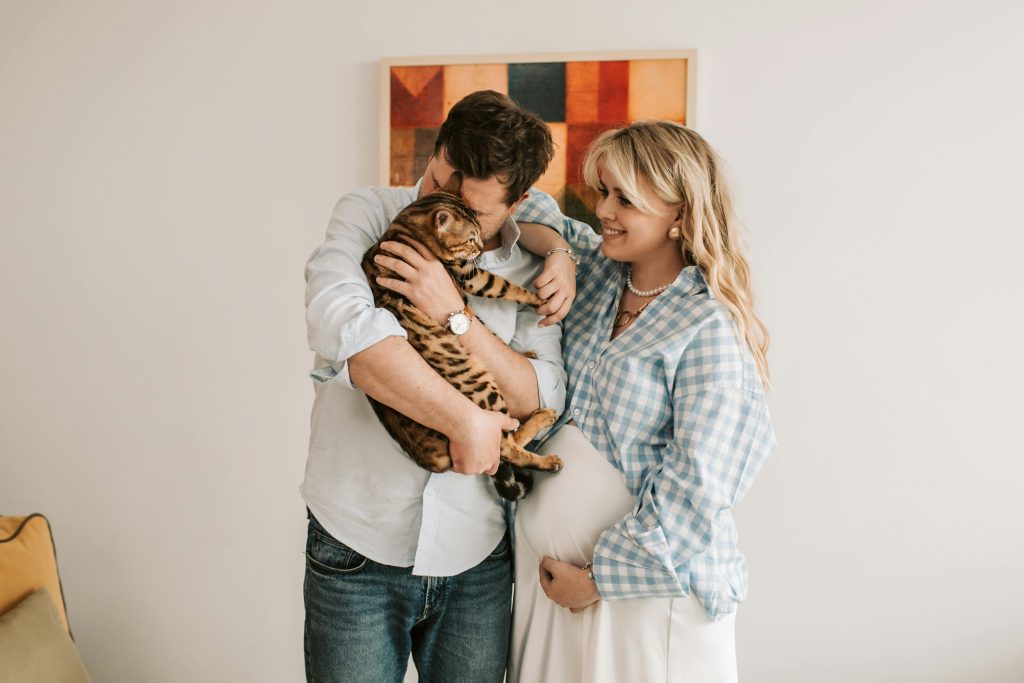
When your cat displays affectionate behavior, such as kneading, purring, or rubbing against you, reward them immediately with treats and praise. This positive reinforcement technique is a powerful tool in behavioral training, as it associates desired behavior with a pleasant outcome.
By consistently rewarding affectionate behavior, you’ll encourage your cat to continue displaying it, ultimately strengthening your bond.
Socialization techniques also play an essential role in cultivating a clingy cat. When interacting with your cat, be sure to engage their senses, offering a variety of textures, smells, and tastes.
This will help them become more confident and affectionate in your presence.
As you reinforce desired behavior, remember to be timely and consistent in your rewards. This will help your cat quickly understand what behavior is being encouraged, ensuring they continue to display affectionate traits.
Reward Physical Touch
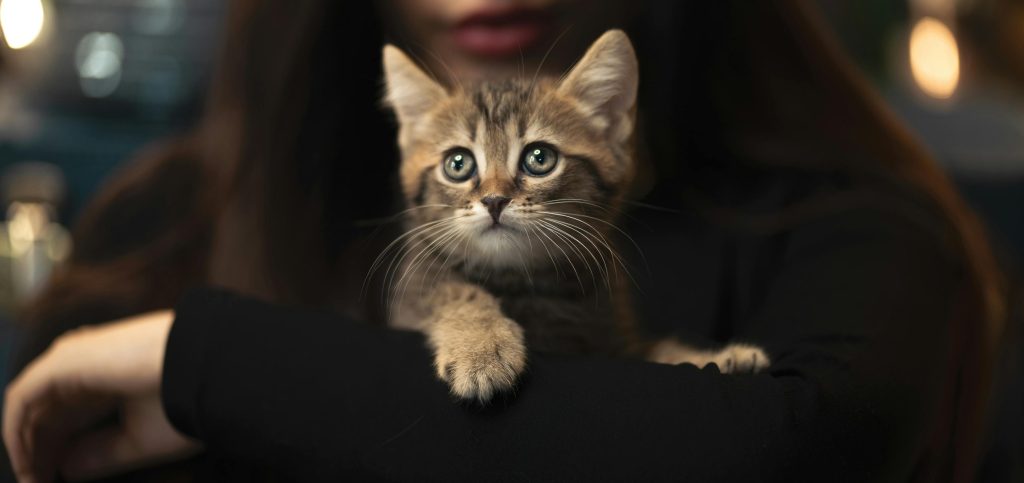
Rewarding your cat with treats and praise the moment they initiate physical touch, such as nuzzling, pawing, or licking, sends a clear message that affectionate behavior is desired and valued.
By doing so, you’re creating a positive association with physical contact, encouraging your cat to seek it out more often.
This is especially effective during bonding activities like playtime or grooming, when your cat is already in a receptive state.
As you reward your cat for initiating physical touch, you’re also providing them with tactile stimulation, which is an essential aspect of feline communication and social bonding.
Cats thrive on touch, and by responding positively to their affectionate gestures, you’re showing them that their touch is welcomed and appreciated.
Consistently reinforcing this behavior will lead to a more affectionate and clingy cat, as they learn to associate physical contact with feelings of comfort, security, and pleasure.
By making physical touch a rewarding experience, you’re strengthening the bond between you and your cat, and paving the way for a more loving and affectionate relationship. Click this link to read on 6 Tips On How To Make A Cat Love You
Timing Is Everything

Building on the positive associations you’ve established through rewarding physical touch, it’s equally important to contemplate the timing of your rewards to maximize their impact and encourage affectionate behavior in your cat.
When your cat exhibits affectionate behavior, such as nuzzling, purring, or rubbing against you, reward them immediately with treats or praise.
This timely reinforcement will help your cat associate their behavior with the positive outcome, strengthening the bond between you and your cat.
Optimal bonding occurs when rewards are provided in close proximity to the desired behavior. By doing so, you’re creating a clear cause-and-effect relationship in your cat’s mind, which will encourage them to repeat the behavior.
As you consistently reward affectionate behavior, you’ll notice a significant improvement in your cat’s overall demeanor and interaction with you.
Understanding cat behavior and leveraging timely rewards will facilitate a deeper connection with your cat, ultimately making them more affectionate and clingy. See our post on How To Train A Cat To Do Tricks.
Increase Quality Time Together

By spending more one-on-one time with your cat, you can strengthen your bond and encourage them to become more affectionate and clingy. Engage in shared activities that promote interaction and create bonding moments.
This can be as simple as playing with a ball of yarn, hiding treats around the house, or even just sitting together in silence.
Some ideas for shared activities include:
- Playing food puzzle games, which challenge your cat to figure out how to get a treat out.
- Creating a ‘cat agility course‘ using household items, such as cardboard boxes and paper bags.
These activities will help your cat associate you with positive experiences and create a sense of dependence on you for entertainment and affection.
Show Physical Affection Regularly
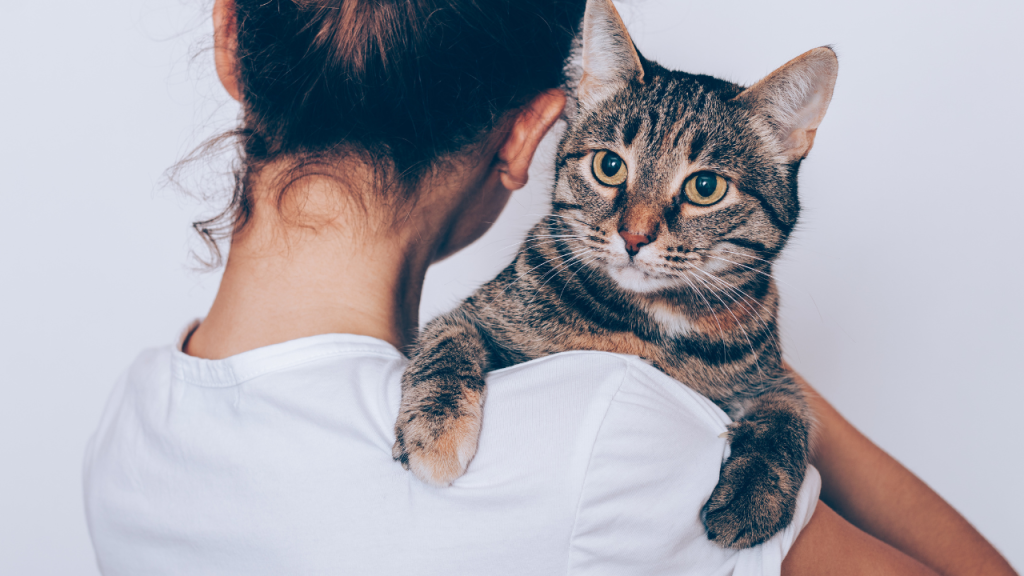
Regular displays of physical affection, such as petting, stroking, or simply cuddling with your cat, play a significant role in fostering a clingy attachment.
By showing your cat physical affection regularly, you’re sending strong affection signals that will likely be reciprocated.
Pay attention to your cat’s body language, as it will help you determine what type of physical affection they enjoy most.
Some cats love to be petted on the head, cheeks, or behind the ears, while others prefer to be stroked along their back or tail.
As you show your cat physical affection, observe their reactions and adjust your approach accordingly.
If your cat starts to purr, rubs against you, or kneads with their paws, it’s a clear indication that they’re enjoying the interaction.
Questions on How to Get A Clingy Cat
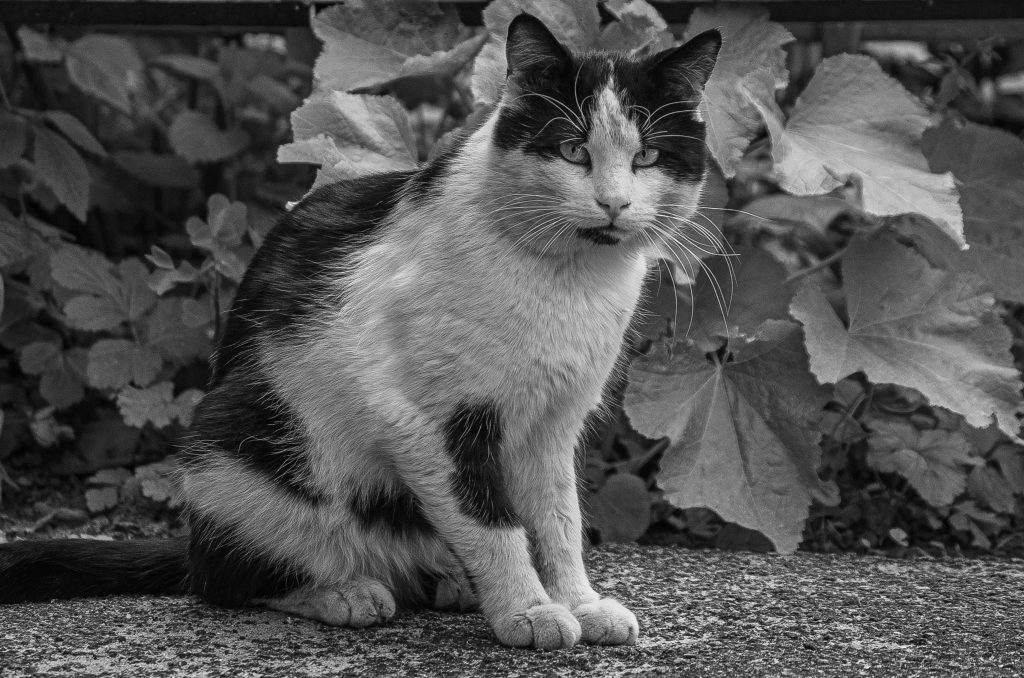
You’ll need to identify your cat’s aggression triggers and take steps to manage them before encouraging clinginess.
Start by consulting a professional animal behaviorist to develop a customized plan for managing your cat’s feline behavior effectively.
“You’re asking if making your cat clingy will harm your relationship. Consider a child overly attached to its parent – it’s smothering. Similarly, altering your cat’s attachment style can negatively impact your long-term bond due to unhealthy cat behavior.”
You can reverse clingy behavior if needed through behavior modification techniques, focusing on adjusting feline attachment patterns. By setting boundaries and encouraging independence, you’ll help your cat develop healthier attachment habits over time.
“Carefully cultivating closeness can indeed calm your cat’s concerns. By employing bonding techniques, you’ll foster a deeper relationship, which can lead to anxiety reduction, making it easier for your cat to cope with separation.”
‘When you alter pet interactions to make your cat clingy, other pets in the household will likely be affected, changing household dynamics. You’ll need to contemplate their personalities and needs to maintain harmony among all pets.’
Final Thoughts on How To Make Your Cat Clingy

By following these steps, you’ve likely turned your cat into a Velcro kitty, always stuck by your side.
‘Wherever you go, they’ll go’ has become your new norm. Your consistent effort has paid off, and now your cat craves your attention and affection around the clock.
Be prepared for snuggling on the couch, ‘help’ with daily tasks, and unconditional love – after all, you’ve just become your cat’s new favorite person.
